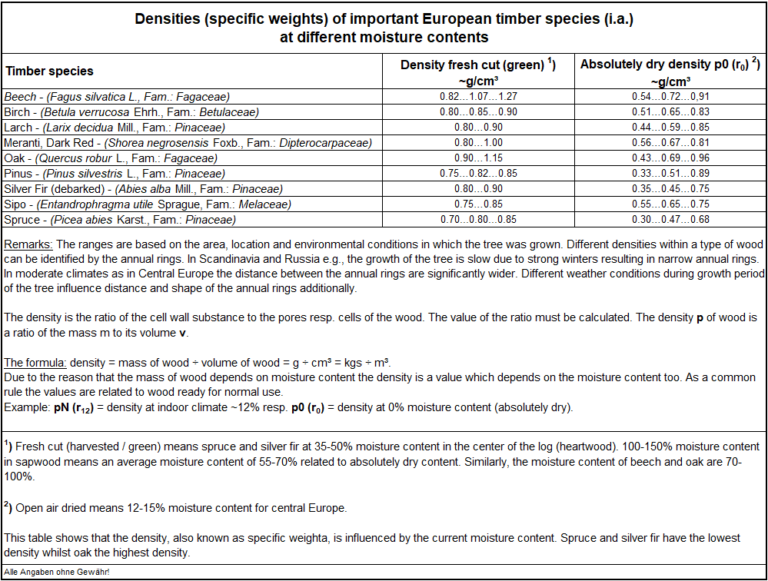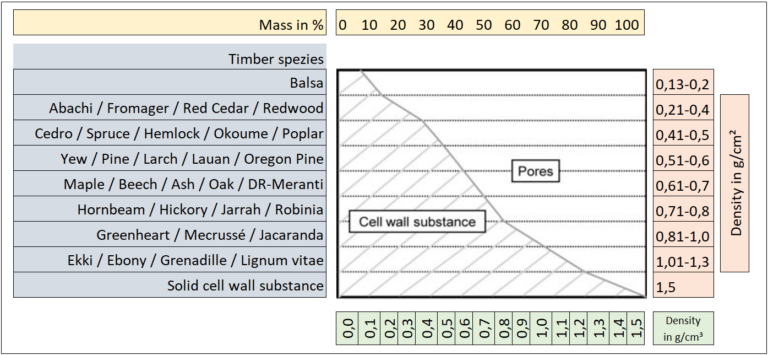Density
Wood contains different quantity of moisture that depends on whether the tree is felled and immediately processed or the timber is already kiln dried to required moisture content for final usage.
The oven-dry resp. absolutely dry density test of timber can be made only by means of a special drying oven at 103°C +/-2°C plus final weighing on a precision scale. The weight of wet wood is highest, while absolutely dry wood is lowest. That means the weight (more precisely the mass) depends on its current moisture content.
Remarks: For logistic matters this fact is very important because of optimal transport (cargo) utilization.
Specific weigths of important European Timber species

Densities of important European Timber species
If you were to compress dry wood so that it no longer had any cavities, the following would happen:
The compressed wooden bodies of different types of wood would all have the same density. It is 1.5g/cm³ and is the density of the pure cell wall substance. The large differences in raw density of different types of wood are based on the different proportion of cell wall substance and pore space (cavity) in the wood body.

Remarks: The ranges are based on the area, location and environmental conditions in which the tree was grown. Different densities within a type of wood can be identified by the annual rings. In Scandinavia and Russia e.g., the growth of the tree is slow due to strong winters resulting in narrow annual rings. In moderate climates as in Central Europe the distance between the annual rings are significantly wider. Different weather conditions during growth period of the tree influence distance and shape of the annual rings additionally.
Springer Handbook of Wood Science and Technology ISBN: 978-3-030-81314-7 Peter Niemz, Alfred Teischinger, Dick Sandberg
Principles of Wood Science and Technology ISBN: 978-3 6428 7933-3 Franz F.P. Kollmann
Storch Industrie-Anlagen GmbH
Eilenau 123
GER 22089 Hamburg / Germany
